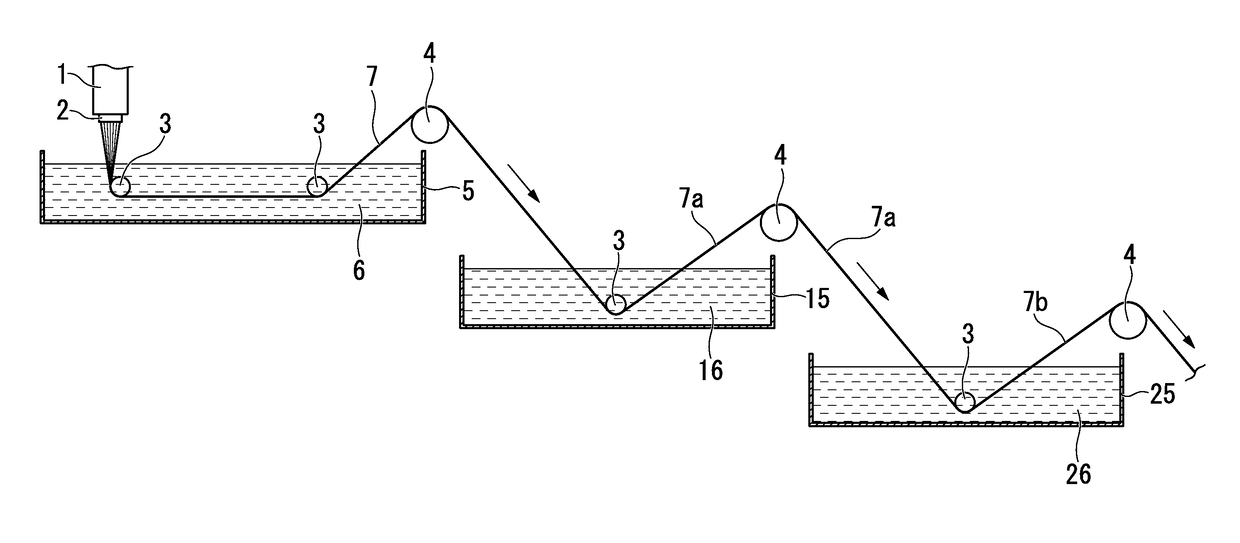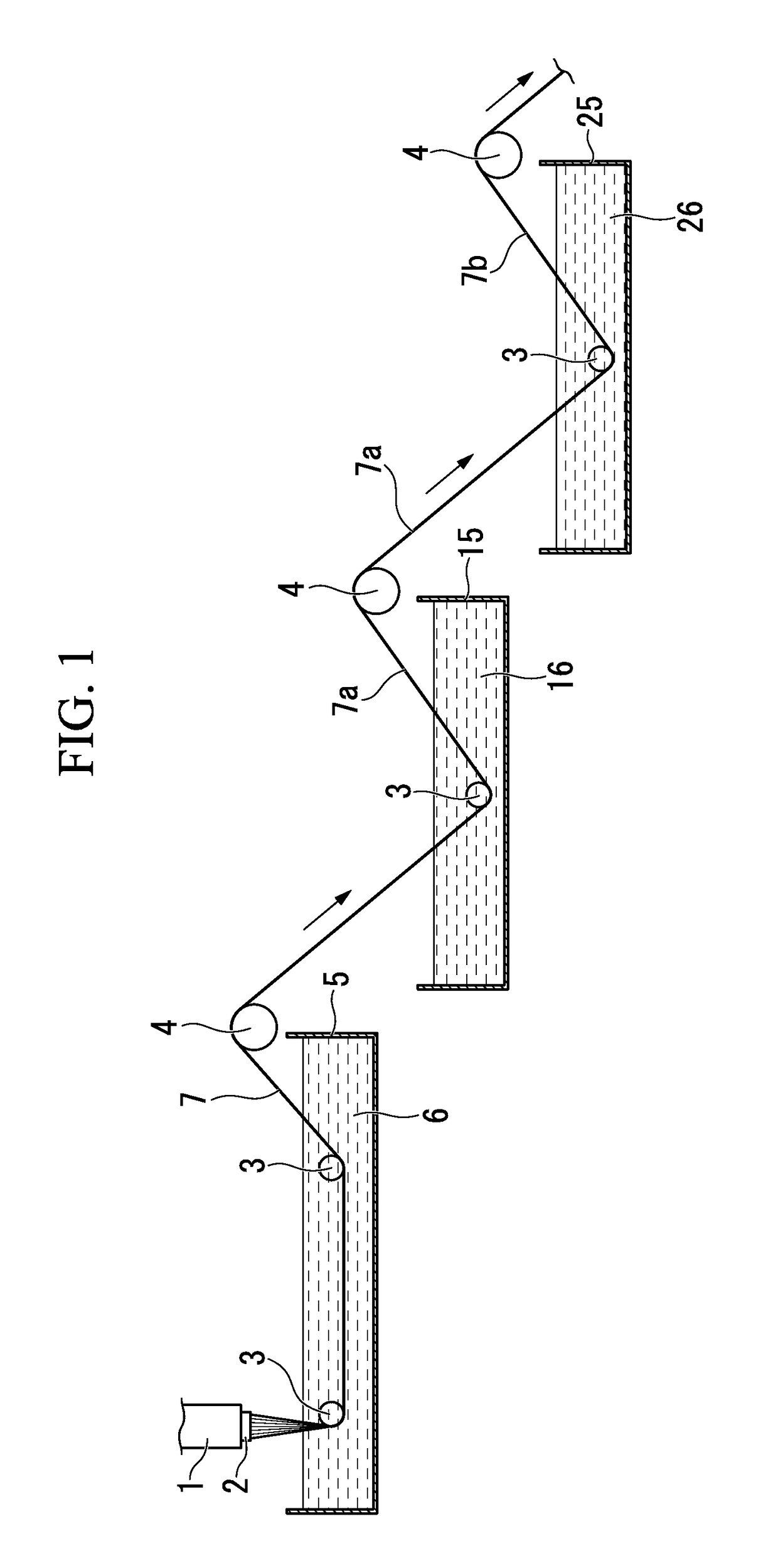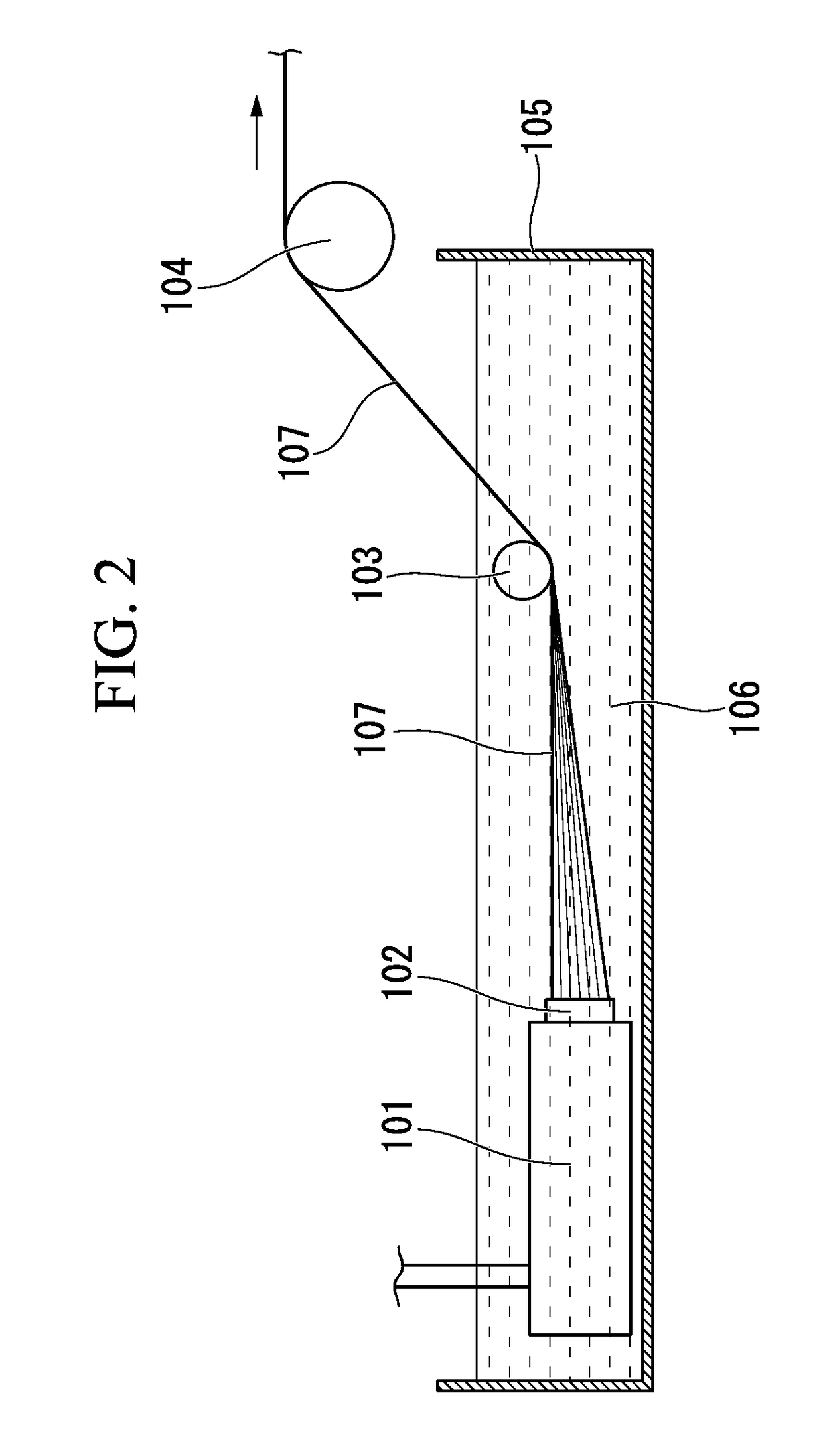Production method for purified polysaccharide fibers, purified polysaccharide fibers, fiber-rubber complex, and tire
a production method and polysaccharide technology, applied in the production method of polysaccharide solids, production methods of polysaccharide solids, polysaccharide solids, etc., can solve the problems of high environmental load, carbon disulfide use, and inability to meet the requirements of the present day production of rayon, etc., to achieve excellent strength, reduce environmental load, and produce purified polysaccharide fibers.
- Summary
- Abstract
- Description
- Claims
- Application Information
AI Technical Summary
Benefits of technology
Problems solved by technology
Method used
Image
Examples
examples
[0445]Although the present invention will be described in further detail by showing the following examples, the present invention is not limited to the following examples.
[0446][Manufacture of Multifilament]
[0447]After heating a polysaccharide solution obtained by dissolving cellulose in 1-ethyl-3-methylimidazolium acetate (C2AmimAc), 1-allyl-3-methylimidazolium chloride (AmimCl), or 1-ethyl-3-methylimidazolium diethylphosphate (C2mimDEP) to the spinning temperature in an extruder, the solution was extruded at a predetermined Air-gap distance to a solidification vessel (first stage coagulation vessel) including the same type of an ionic liquid as an ionic liquid in a spinning solution at a predetermined concentration, then, kept for a predetermined period of time, and cleaning and drying processes were performed, whereby multifilaments (fibers) of Examples 1 to 10 and Comparative Examples 1 to 9 shown in Tables 1 to 4 were obtained.
[0448]Moreover, the details of production condition...
PUM
| Property | Measurement | Unit |
|---|---|---|
| temperature | aaaaa | aaaaa |
| retention time | aaaaa | aaaaa |
| retention time | aaaaa | aaaaa |
Abstract
Description
Claims
Application Information
 Login to View More
Login to View More - R&D
- Intellectual Property
- Life Sciences
- Materials
- Tech Scout
- Unparalleled Data Quality
- Higher Quality Content
- 60% Fewer Hallucinations
Browse by: Latest US Patents, China's latest patents, Technical Efficacy Thesaurus, Application Domain, Technology Topic, Popular Technical Reports.
© 2025 PatSnap. All rights reserved.Legal|Privacy policy|Modern Slavery Act Transparency Statement|Sitemap|About US| Contact US: help@patsnap.com



